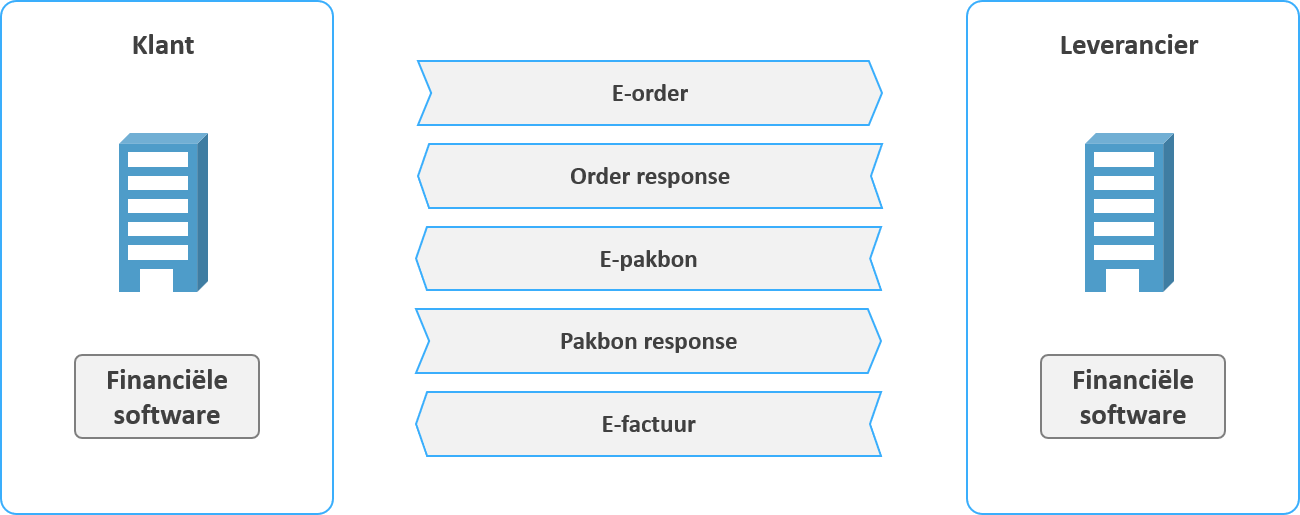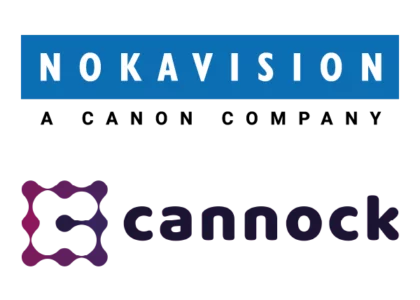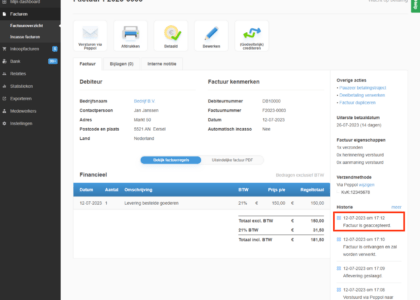In 2020, every organisation had to deal with working from home. For some organisations, it was just a matter of opening the laptop at home and for others, it meant a huge change in the way they work.
Financial departments were also affected. Organisations that had not yet started digitising were now running into serious problems. Companies that were already working on this are now reaping the benefits.
We also started 2021 with a lockdown. What opportunities will there be in 2021 for organisations that want to start digitising their finance departments? And what optimisation possibilities are there for companies that have already taken steps in this direction?
Getting started with e-invoicing in 2021
The manual processing of invoices is time-consuming, increases the risk of errors and, depending on the organisation, makes it necessary to be present in the office. Many organisations do receive PDF invoices that are entered using scan-and-recognise software, but these still have to be checked and corrected manually.

By switching to receiving e-invoices, organisations can make their incoming invoice flow much more efficient. The invoices are automatically entered, without manual intervention. This not only saves a lot of time when entering invoices, but also prevents errors. If an invoice does not meet the requirements, this can be automatically fed back to the supplier.
You can read more about receiving e-invoices on this page or in our whitepaper ‘Successful e-invoicing’.
Onboarding suppliers to e-invoicing in 2021
Can your organisation receive e-invoices, but few suppliers actually send e-invoices? Then it’s time to actively approach your suppliers and ask them to deliver e-invoices (supplier onboarding). In order to make leaps and bounds in the short term, it is good to start by approaching your largest suppliers.
Are you looking for a sustainable solution to get all your suppliers to switch to e-invoicing? Then a good onboarding strategy is important. Just sending an e-mail to all your suppliers is not enough. The onboarding of suppliers can be time-consuming and frustrating for organisations without any experience in this area. Therefore, supplier onboarding is often outsourced.
E-procurement
With e-procurement, it is possible to automate the entire procurement process. The picture below shows a supplier receiving an e-order from its customer and delivering the service. He sends an e-packaging slip and, after the customer’s approval, sends an e-invoice. After receipt by the customer, the e-invoice is matched with the e-order, the invoice is entered and, if applicable, made payable immediately. All automated.

Especially for business relations who exchange a lot of orders and invoices with each other, the advantages are huge. This way of working prevents errors and saves a lot of time in processing, but also in communication.
Digitising the procurement process is nothing new. Large companies have often set up this process 1-on-1 with their largest suppliers. This is a very expensive process and therefore not interesting for smaller organisations. Nevertheless, they too can achieve considerable benefits when digitising the procurement process. Peppol can be used for this. Every organisation connected to Peppol can exchange e-orders with other connected organisations in the same standardised manner. This makes e-procurement also interesting for smaller companies and large organisations can easily expand the number of relationships with which they e-order.
NPa wants to increase adoption of Peppol
The Dutch government has been the regulator of the Peppol network in the Netherlands since the end of last year. Service providers, such as tradeinterop, are connected to this network through the Dutch Peppol Authority (NPa).
Because Peppol is secure and it is possible for any type of organisation to connect to it, central government wants as many companies and government organisations as possible to exchange invoices and orders electronically. They are therefore actively working on promoting the use of Peppol. The more organisations are connected, the easier it will be to switch completely to e-invoicing.
Peppol started as a European network, but by now it is used in 30 European countries, Australia, Canada, New Zealand, Singapore, South Africa and America (source). So you can also easily e-invoice and e-order with companies and government organisations in other countries.
Do you have questions or want to know how your organisation can get started with e-invoicing in 2021? Then feel free to contact us!






